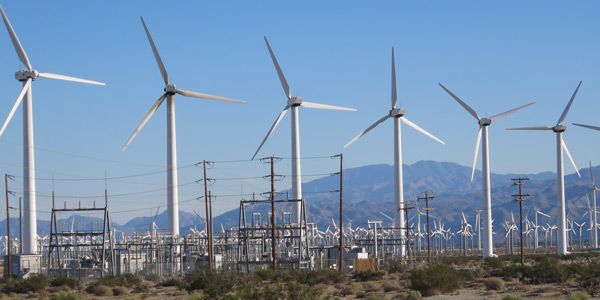By Michael Brooks
FERC on Thursday proposed changes to its pro forma large generator interconnection rules intended to increase certainty and transparency for new resources (RM17-8).
The commission issued the Notice of Proposed Rulemaking in response to feedback gathered at a May technical conference and in subsequent comments. (See Generators, Tx Operators Spar over Interconnection Processes Before FERC.) Generation developers have long complained about the long wait time for interconnection approvals. Transmission providers complained about the number of projects that drop out of the interconnection queue — increasing the number of restudies needed — and the high concentration of projects, such as wind farms, in small geographic areas.
“Cost and timing uncertainty presents a significant obstacle, as some interconnection customers are less able to absorb unexpected and potentially higher costs or extended timelines resulting from the withdrawal of requests higher in the queue,” the commission said in a news release. “A lengthy interconnection process can be a challenge to generation technologies that are evolving rapidly. The commission believes that interconnection processes should be capable of incorporating rapidly evolving generation technologies into an interconnection request while maintaining system reliability.”
FERC detailed 14 changes to the pro forma Large Interconnection Agreement and Interconnection Procedures that it said should address these and other concerns. Among the most notable are requirements that transmission providers post the methodologies used to form network models in their interconnection studies, as well as congestion and constraint information, on their Open Access Same-Time Information System (OASIS) sites.
They would also be required to allow interconnection customers to:
- limit their requested level of service below their generating facility’s capacity;
- operate on a limited basis before the full interconnection process is completed; and
- use surplus interconnection service at existing points.
RTOs and ISOs would also be required to develop a resolution process for interconnection disputes between developers and transmission owners.
The reforms would apply to projects over 20 MW, but the commission is seeking comment on whether any of them should apply to rules for small generators as well.
Commissioner Colette Honorable cited the need to accommodate new technologies, such as energy storage, as one of the main reasons for the NOPR. Two of FERC’s changes dealt with energy storage resources specifically. One would change the definition of “generating facility” in the pro forma documents to explicitly include storage. The other would require transmission providers to evaluate their methodologies for modeling storage resources in their interconnection studies and report their findings to FERC.
“The commission believes the proposed reforms will benefit interconnection customers through more timely and cost-effective interconnection and will benefit transmission providers by mitigating the potential for serial restudies associated with late-stage interconnection request withdrawals,” it said.
“I think this is a good example of the kind of bread-and-butter work that FERC does that may not always receive much public attention: work that is technical and weedy, but work that nevertheless is very important,” Chairman Norman Bay said at the commission’s open meeting Thursday. “I think today’s NOPR strikes an important balance between the needs of interconnection customers and those of transmission owners.”
Stakeholders have long sought commission action on the interconnection process. The pro forma agreement and procedures were established in 2003 and most recently updated in 2008. May’s tech conference was prompted by a petition from the American Wind Energy Association last year. (See After Years of Questions, Interconnection Customers Await Answers.)
Comments are due no later than 60 days after the NOPR’s publication in the Federal Register.





